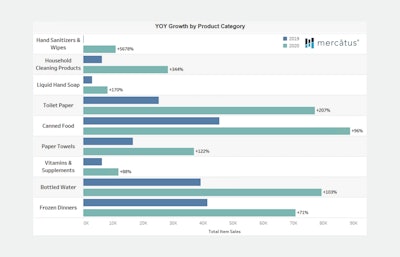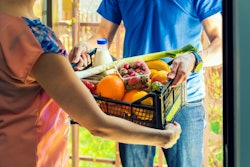
Shoppers in self-solation are avoiding brick-and-mortar stores, and instead flocking to e-commerce to fulfill their shopping needs. According to a survey by Mercatus, retailers have seen a rapid 1,200% increase in online shopping account registrations and a 300% increase in mobile app downloads, up from the previous month. It’s very possible that, during this crisis, we’ve now reached the projected percentage of the population using online commerce by 2025.
What Can Be Done for the Future?
When we think about scenarios like COVID-19 and the increased need for grocery shopper services (like curbside pickup and delivery), it becomes clear that investing in e-commerce and shopper services is essential. To ensure future resilience and success of an e-commerce program, grocers need to:
1. Invest in a click-and-collect (or curbside pickup) service they own and control
In doing so, grocers are empowered to provide a better shopper experience, increase margins (compared to delivery or a fully outsourced experience), and train their employees to manage this service line, ensuring it stays open in times of crisis. Outsourcing pickup service puts retailers’ reputations at the mercy of third-party delivery companies, who during the current outbreak, have reportedly had extended wait times and/or a lack of delivery windows on grocery deliveries. This results in a negative customer experience, which we know will sit with the retailer, not the third-party provider, when all is said and done.
2. Invest in proper management and control of their delivery service
With shoppers actively avoiding leaving their homes, grocery retailers’ delivery services have been tested most of all. Events like these really bring to light the complexities and cost of delivery orchestration, and the need to properly manage each component so that the delivery program runs smoothly. Ownership of the delivery becomes even more important with the anticipated shift of more shoppers to e-commerce and delivery, which will add pressure to already thin margins in grocery.
3. Own shopper data
While many retail banners have seen a massive increase of loyalty account registrations and app downloads from the coronavirus outbreak, grocers using delivery-provider marketplaces have been directing shoppers to sign up with marketplace providers. This is a major lost opportunity, as those new shoppers are unlikely to be loyal to the retail who directed them to the marketplace. Retailers don’t only lose customer loyalty in this case, but they also lose ownership of the customer data. They won’t be able to gain the actionable insights needed to improve their eCommerce or brick-and-mortar experiences. Data ownership opens up the opportunity to anticipate shoppers’ needs in the event of a crisis and ensures the products their shoppers want and need are available.
Looking ahead, as the viral outbreak curve eventually flattens and consumers are once again able to leave their homes, spending more money at other food and entertainment sources like restaurants and vacations, this surge in sales will likely subdue. And as the grocery supply chain recuperates, and shopping patterns normalize, grocers should use the lessons to be learned during this uncertain time so strengthen their eCommerce and fulfillment offerings.

















